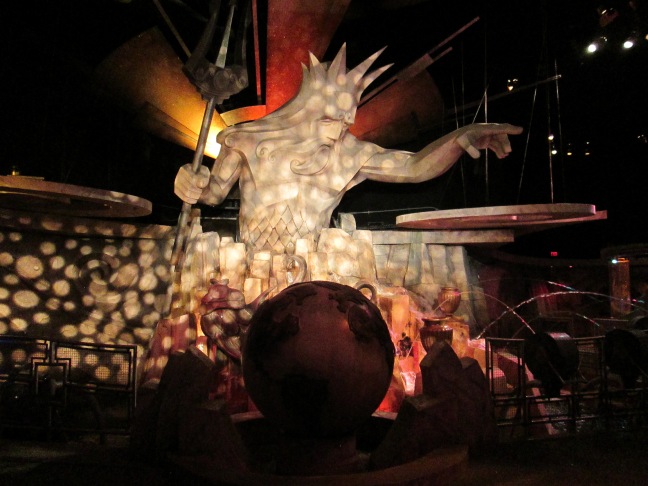After a very happy month of living in a travel bubble, I’m now back to real life and trying to process the experience. I took copious notes and photos while I was away, and they are proving very useful portals back to the cities and museums I visited. What I’m find most unsettling is that I don’t know what I think, but I do know that what I used to think doesn’t fit anymore. Some of my fundamental principles of museum education have been challenged – which is what I hoped would happen – but I’m yet to land back down on either side of the fence with a strong opinion either way. For example, it has been my mantra since the dawn of time that all programming must be rooted in the collections and exhibitions; I would refer to it as ‘Easter bonnet syndrome’ when programming didn’t respond to its immediate context or encourage direct engagement with artworks. But after what I’ve seen in the US, now I’m not so sure, and I’m excited about the potential of blowing the whole thing open and rethinking the purpose of programming.
I was struck by the more open approach at MCA Denver, where the events programming holds equal status with exhibition programming. The team place a strong emphasis on creating social experiences and platforms for thinking about culture and society more holistically. Similarly, Columbus Museum of Art (CMA) is committed to promoting creativity and provides drop-in studio time for families and young people as well as informal opportunities to make and draw in their Chase Center for Creativity. Both MCA Denver and CMA do respond to collections and exhibitions, but not exclusively.
I also visited science museums during the course of my trip – they have gone quite a bit further, and take an even more relaxed approach to engaging with original objects. The Perot Nature and Science Museum, Dallas, and the Center of Science and Industry (CoSI), Columbus, both have play spaces for young children without any collection objects on display. Instead they provide space to experiment with sand, water, role-play (shopping for fruit and veg seems especially popular), and physical activity such as climbing and crawling, and improving manual dexterity. This approach reminds me of the National Maritime Museum’s new AHOY! Children’s Gallery. We went to see AHOY! on a V&A team outing and the absence of collection objects generated much discussion. While it still makes me a bit twitchy, I’m more open to the idea than I was previously. All of these child-friendly galleries were heaving with families, and they looked like they were having a great time. Those young children must go home believing that museums = fun and want to return. If collection-free spaces provide a gateway into the museum, is that so terrible? Or is it a cul-de-sac, rather than a gateway, for those families who don’t explore further? Or is it just snobbery to judge how others choose to engage? Hmm, dunno, I might need to stay on the fence a bit longer on that one…


Coming back to the world of art museums and new approaches to programming, Bank Street College of Education, New York, offers Leadership in Museum Education post-graduate courses. I met with Program Director, Brian Hogarth, and he shared their recent report, Leading the Future of Museum Education: Challenges and Opportunities (I haven’t been able to find an online version yet, but there are some good blog posts about it). It summarises a three-day meeting at the Denver Art Museum in May 2015 that invited museum educators from across the country, as well as international contributors, such as our Jane Sillis, Director of engage, to address the pressing issues of the sector. The report includes the following statement:
As educators, we want our institutions to take a more active role of addressing … broader social issues. In the past, the job of museum education was to cultivate learning and appreciation by drawing people into the museum, generating interest and focusing attention on collections and exhibitions. Now, our work is more about connecting and facilitating experiences that visitors, in part, help to determine. Our work has become more collaborative and outward in orientation. (p.5)
This statement feels very consistent with the practice I was seeing. I like the phrase ‘connecting and facilitating experiences’ – it feels far more expansive than focussing solely on objects, and reflects both the complexity and inherent possibility of our roles. It differs from ‘Easter bonnet syndrome’ too; it’s an approach that values the context of a museum to hold all sorts of conversations, and bring together a range of experiences and perspectives (the same could also be said of libraries). It’s an approach that has possibly been driven by audience demand; we are having to rethink the purpose of our cultural institutions because people want to engage differently – stoic discomfort and po-faced beard-stroking don’t cut it anymore.
There’s a whole wide world outside our museums, and what’s going on out there means more to many people than the stuff accumulated inside our buildings – how can we better bridge the two? Don’t get me wrong, I love object-based learning and the pleasure of looking at amazing wonders from around the world; I’m not proposing we abandon our collections. I just think we’re missing a trick if we don’t cast our nets further, and let more of the outside world in.
Header image source: http://www.sky.com/tv/movie/the-italian-job-1969
